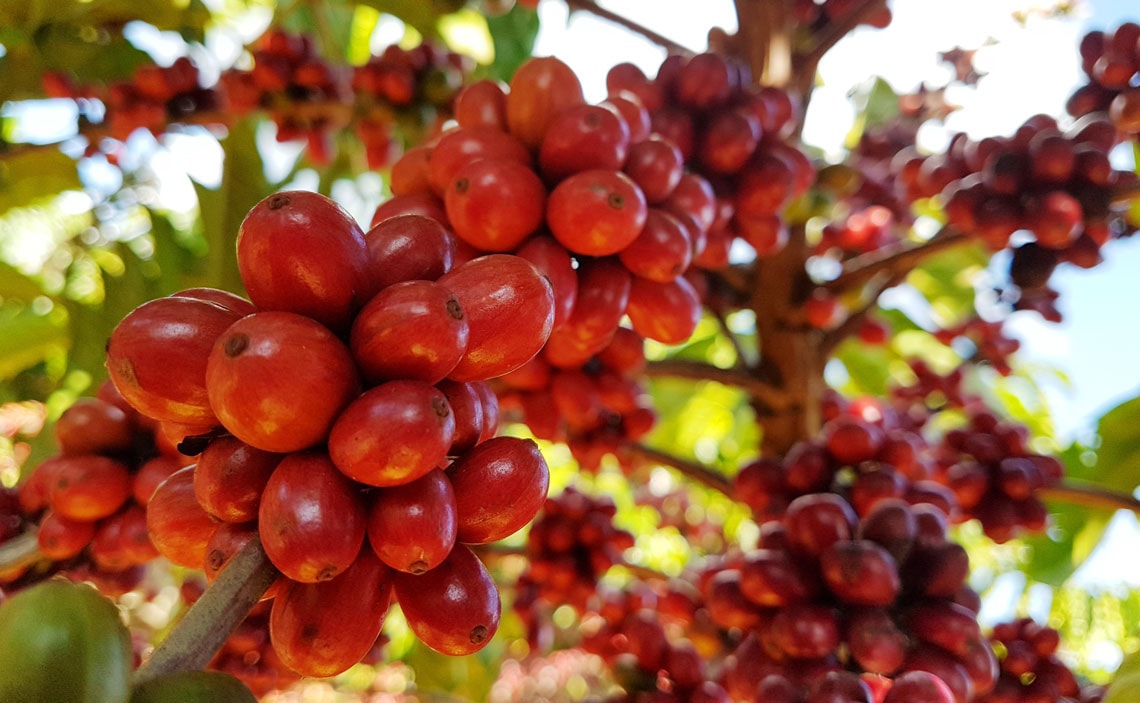A new chapter could begin for Amazonian coffee this year with the release of the first 10 hybrid robusta coffee (Coffea canephora) cultivars by the Brazilian Agricultural Research Corporation (EMBRAPA), which could potentially triple the average crop yield. A cultivar is created by selective breeding for genetic improvement and is only recognized as such if it differs phenotypically and genetically from other existing cultivars. A variety is a natural variation of the plant from which it descends, which has not been subjected to any deliberate selection process. A hybrid cultivar, meanwhile, is the result of crossing two different varieties, in this case robusta and conilon, which both belong to the coffee species C. canephora.
The novel aspect of these new cultivars, according to Alexsandro Teixeira, a researcher at EMBRAPA Rondônia, is that they were created by individually characterizing different clones (genetic copies of certain plants, in this case obtained by vegetative reproduction), which has never been done before with Amazonian coffee. With this method, each cultivar has its own specific characteristics with respect to productivity, taste, and resistance against diseases, among other properties. Typically, robusta coffee cultivars are made up of more than one clone.
Unlike arabica coffee (Coffea arabica), which is commonly grown in the Southeast of Brazil, robusta plants require cross-fertilization—they cannot self-pollinate. To produce beans, they need two different but compatible plants that pollinate each other. Thus, having selected the best characteristics for the Amazon climate, the 10 cultivars can be combined according to their compatibility and crossed with each other, enhancing their potential in the region and producing a greater yield.
The individual characterization of the 10 cloned cultivars gives coffee producers more information on which combine best for their specific crop—until now, the cross-pollination process has been completely random. The new cultivars, called Robustas Amazônicas and released after 15 years of research supported by the Brazilian Coffee Research Consortium, are made up of three compatibility groups. The most efficient crops can be grown by planting six clones: two from each group.
Greater productivity
Rondônia is the fifth-largest coffee producing state in Brazil, with robusta coffee plantations covering an estimated area of 72,000 hectares and producing 2 million bags per year. While the conilon variety is compact, with smaller, drought-resistant plants, robusta is more disease-tolerant and produces a better quality coffee. Conilon has historically been crossed with robusta plants multiple times in Rondônia, resulting in a number of hybrid cultivars. “What we did was guide the breeding process to further explore this hybridization,” says Teixeira. “EMBRAPA took the most productive specimens of conilon and robusta and crossed them in an experimental setting.”
According to the agronomist, the 10 new cultivars, already registered with the Brazilian Ministry of Agriculture, Livestock, and Supply and available from accredited nurseries, can reach a productivity of 80 bags per hectare (ha)—with proper irrigation, this figure can exceed 100 bags/ha. Today, the state average is around 30 bags/ha.
“All the properties I visited in Cacoal—where they are already using the new cultivars—were irrigated and are producing an average of 110 bags per hectare,” says Marco Antônio Campos, vice president of administration and finance at the Brazilian Coffee Industry Association (ABIC). “They have achieved high productivity at a low cost,” he says. “And what’s more, the quality of the product is very high.”
Republish